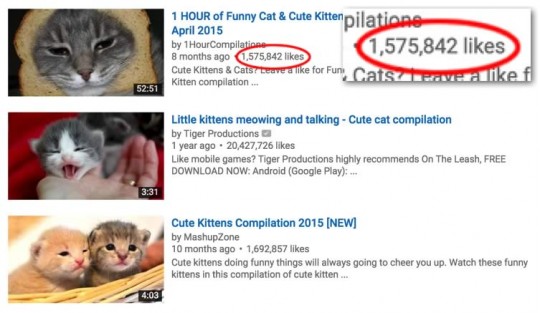Social Proof: Are You Doing It Wrong?

[Guest article by Tom van Bommel]
Ever since Robert Cialdini’s Influence became a smash bestseller, his “social proof” principle quickly arose as the world’s favorite influence technique.
That happened for a good reason. After all, what’s an easier way to boost sales and conversions than simply showing what other people have bought or done before?
It’s no surprise that we are all bombarded with social proof appeals. Browsing through the web seems to be an endless stream of product ratings, testimonials, statistics, actions and desires of other people.
I myself was a firm believer of the whole social proof mojo. Needless to say, my heart skipped a beat when I encountered a study last month that changed this for both the worse and the better.
To make a long story short: social proof works, but I was using only a fraction of its full potential all that time.
Social proof helps conversion, but are you doing it wrong? #CRO #psychology Share on XLiking versus doing
Social proof can come in many forms, ranging from vivid customer cases to dry statistics. However, what Tu and Fishbach (2015) found is that the most game-changing social proof element is not necessarily its execution, but rather how it’s framed.
Social proof can either be framed in terms of actions (“many people bought this product”) or preferences (“many people liked this product”).
Think for a second which type of framing would yield the best compliance results.
If you are like me, your bet is on action-based social proof. I reasoned that the more definitive and concrete kind of social proof would be more influential. And actions are more concrete than preferences, right?
I was wrong.
The researchers discovered that preferences are significantly more influential than actions when it comes to persuasion.
In other words: consumers are more eager to follow what others liked, rather than what they’ve had. This was found across a wide range of contexts, both within the lab and the real world.
When shopping, consumers are swayed more by what other people would like to have, rather than actually have. When dining in a restaurant, people comply with their friends’ choices only when talked about as desires before ordering, but not when the friends’ food is already ordered.
Even diving into the digital depths of YouTube, viewers’ clicks are more influenced by liking scores (i.e., preferences) than views (i.e., behavior). For example, these displays look identical but the second one uses likes rather than views.

vs.

To make this principle a bit more vivid, let’s put it in the context of intimate relationships. Would you rather have a partner that’s either desired by many or had by many others? Thought so.
How to boost conversion with preference-based social proof
The superiority of preference-based social proof opens many exciting avenues for conversion testing.
I’m sure you recognize the phrase “other customers bought” or one of its many variations. It would be interesting to see how that converts compared to “other customers liked”.
Similarly, you can rewrite “bestsellers” and “most ordered” in “favorites” and “most wanted.”
Small copywriting alterations like these might just spark a very big difference in conversion.

vs.

From the scope of page-structure, the current insights suggest to save a more prominent spot for customer reviews, testimonials and social media metrics (i.e., social proof containing preferences) compared to statistical social proof information such as “bought by more than 10.000 people” (Even that could be subtly rephrased into “enjoyed by more than 10.000 people.”)
As always, the maxim “you should test that” holds true.
The effect wasn’t uniform in all of the experiments, and your situation might change the dynamics. For example, if your company isn’t well known, having 26,450 customers may be more persuasive than being liked by that many people.
There are even rare outlier examples in which social proof reduces the conversion rate. So, run a simple A/B test to see what works for you.
Should you discard action-based social proof?
Absolutely not. If tomorrow’s newspaper exclaims that apples are healthier than bananas, would you stop eating bananas overnight?
Social proof is mankind’s most compelling piece of information. If you can use it, use it. It will help your influence soar, be it rooted in preferences or actions.
But, when you have the option to reframe your message in terms of what people liked instead of what they did, it’s likely your message will pack an extra persuasive punch.
Study: preference-based social proof can work better than action-based. #CRO Share on X